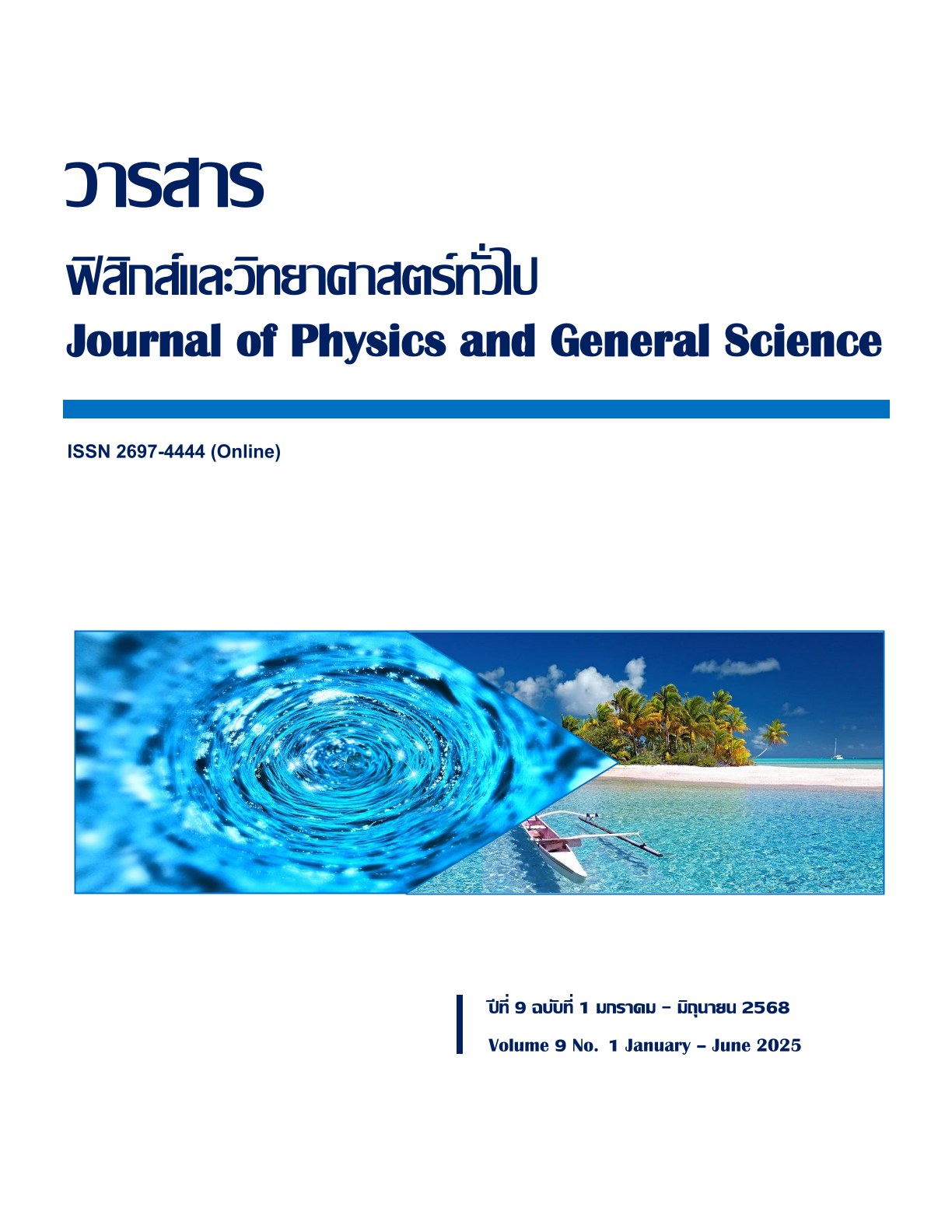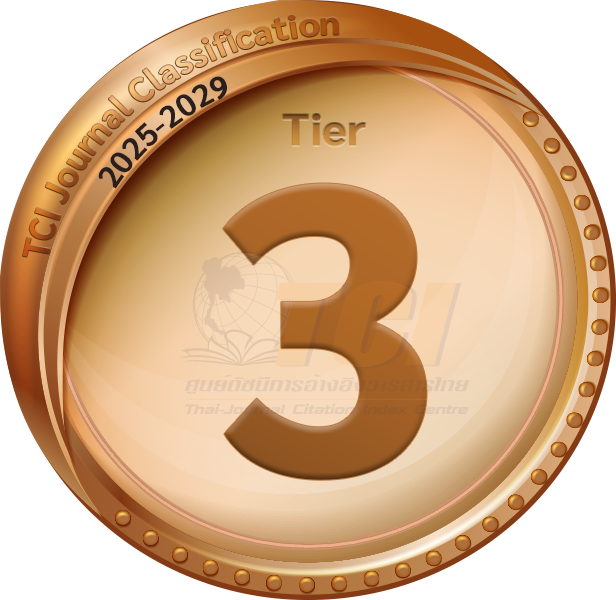The Effect of the 5E Inquiry-Based Learning Model Combined with the Kamol Model on Physics Problem-Solving Skills in Wave Optics Among Grade 11 Students
Abstract
This study aimed to evaluate the effectiveness and efficiency index of implementing the 5E Inquiry-Based Learning Model combined with the Kamol model on students' academic achievement, problem-solving skills in physics, and satisfaction levels. The participants were 41 Grade 11 science-mathematics students, selected through purposive sampling. The research instruments included: (1) lesson plans based on the 5E Inquiry-Based Learning Model integrated with the Kamol model; (2) a 20-item multiple-choice test assessing pre- and post-instruction achievement in wave optics; (3) a 10-item problem-solving skills assessment using a 5-point Likert scale; and (4) a 15-item satisfaction questionnaire, also employing a 5-point Likert scale. Data analysis utilized percentage, mean, standard deviation, and t-tests. The findings indicated that the instructional approach achieved an effectiveness score of 74.51/74.02 and an efficiency index of 0.65. Post-instruction academic achievement (x̄ = 14.80, SD = 1.32) was significantly higher than pre-instruction scores (x̄ = 5.10, SD = 2.14) at the 0.01 significance level. Additionally, 92.68 % of students surpassed the 70 % achievement benchmark. The average problem-solving skills score was 4.30 (SD = 0.05), categorized as high, and overall satisfaction with the instructional approach was rated at 4.38 (SD = 0.11), indicating a high level of satisfaction.



